What is ‘America’ in French? This might be an easy question for francophiles and francophones to answer. But we should never take for granted that, for many, the answer is not so obvious. So here is how French speakers say it… with further exciting facts to learn about the word.
What is ‘America’ in French?
The answer is… AMÉRIQUE!
For those of you who can read IPA, the pronunciation in French is /ameʁik/.
🎶 How to say ‘Amérique’ in French ⤵
Amérique is a feminine word in French : L’ (la) Amérique – une Amérique.
The translation of the word ‘American’ in French is américain (masc.) and américaine (fem.).
🎶 How to say ‘Américain, Américaine’ in French ⤵
In turn, the Americans call France FRANCE and the people of France are the French.
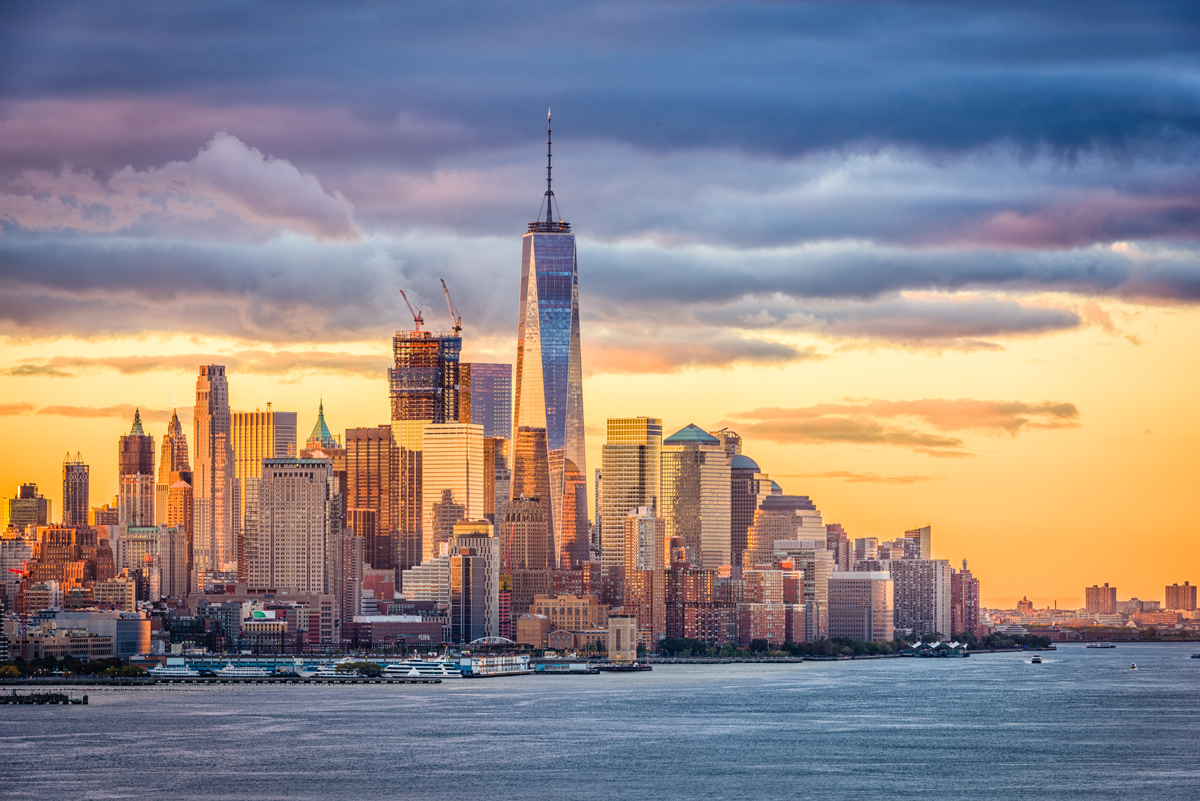
Where does the name America come from?
The name ‘America’ is fascinating and relates to the early 16th century.
It all started in Lorraine, now a French region
It all began in 1507 when a skilled cartographer, Martin Waldseemüller, collaborated with the scholar Mathias Ringmann. They were part of a scholarly society called Gymnase Vosgien, situated in the duchy of Lorraine, specifically in Saint-Dié-des-Vosges.
Together, Waldseemüller and Ringmann worked on creating a groundbreaking map known as the Universalis Cosmographia. This map represented the newly discovered landmasses’ southern region, which we now call the Americas. Notably, this map featured something significant—it was the first time the term ‘America’ appeared in cartography.
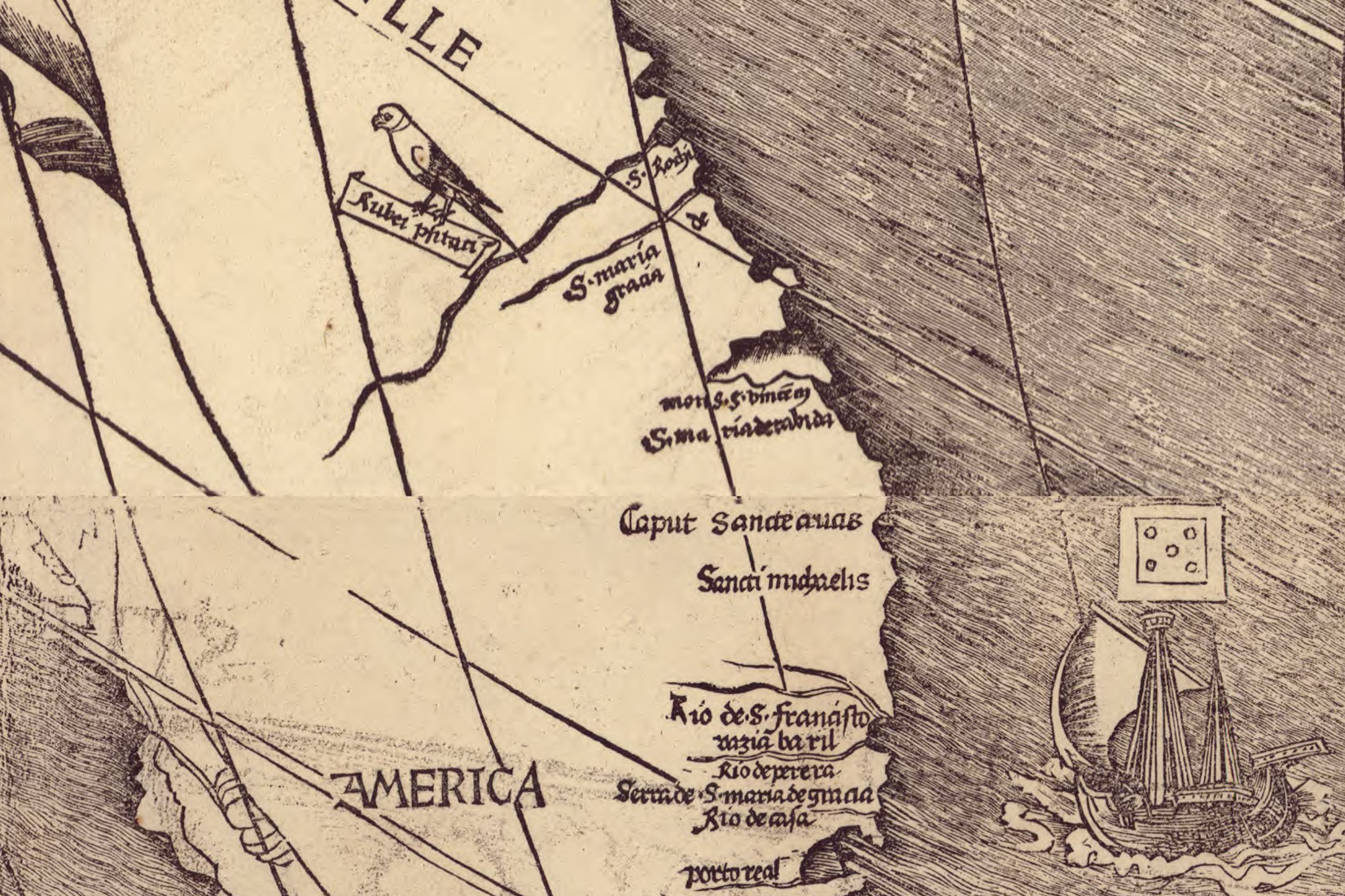
Amerigo Vespucci
The name ‘America’ was chosen as a tribute to the Italian explorer Amerigo Vespucci. Amerigo, the Italian version of the Germanic name ‘Aymeric,’ a southern variant of ‘Henri,’ belonged to this accomplished navigator from Florence.
Waldseemüller and Ringmann decided to feminize Amerigo’s name, resulting in ‘America,’ they bestowed this name upon the southern part of the newly mapped landmass. This acknowledged Vespucci’s significant contributions to exploring these uncharted territories.

In essence, ‘America’ was born out of a collaboration between Waldseemüller and Ringmann in their quest to represent the world’s geography accurately. It became an enduring label for the southern regions Vespucci explored and the continents we now know as North and South America.
Through this innovative map, Amerigo Vespucci’s name became forever intertwined with the vast continents that have played a pivotal role in shaping human history.
America in French: Interesting facts
By metonymy, the word Amérique (America) often refers to America as a continent or the United States of America.
The American continent in French
In French, the American continent is l’Amérique or le continent américain.
One distinguishes:
- l’Amérique du Nord = North America (all countries from Panama to Greenland, including Mexico, the US, and Canada)
- l’Amérique du Sud = South America (all land south of Panama, including Brazil, Venezuela, Chile and Argentina)
- l’Amérique centrale = Central America (“small” countries between Mexico and Colombia, including Guatemala, Nicaragua and Panama)
- l’Amérique latine = Latin America (the part of America where the official languages are derived from Latin (Spanish, Portuguese and French)
- le Nouveau Monde – New World (as opposed to the Vieux Monde [Old World], i.e. Europe, Africa and Asia).
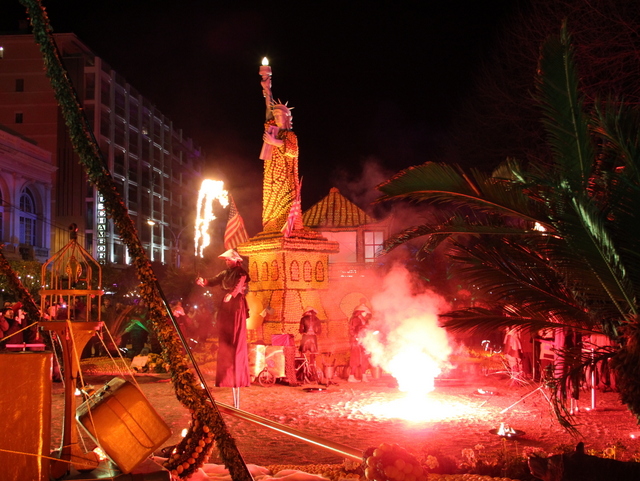
The United States in French
Les États-Unis d’Amérique (United States of America) is an American country consisting of 50 états (states) and whose capital is Washington D.C.
🎶 How to say ‘Etats-Unis d’Amérique’ in French ⤵
The USA is known in French as:
- les États-Unis,
- les USA,
- l’Amérique or
- les States
The United States is sometimes abbreviated in French as U.S., U.S.A. or E.-U.
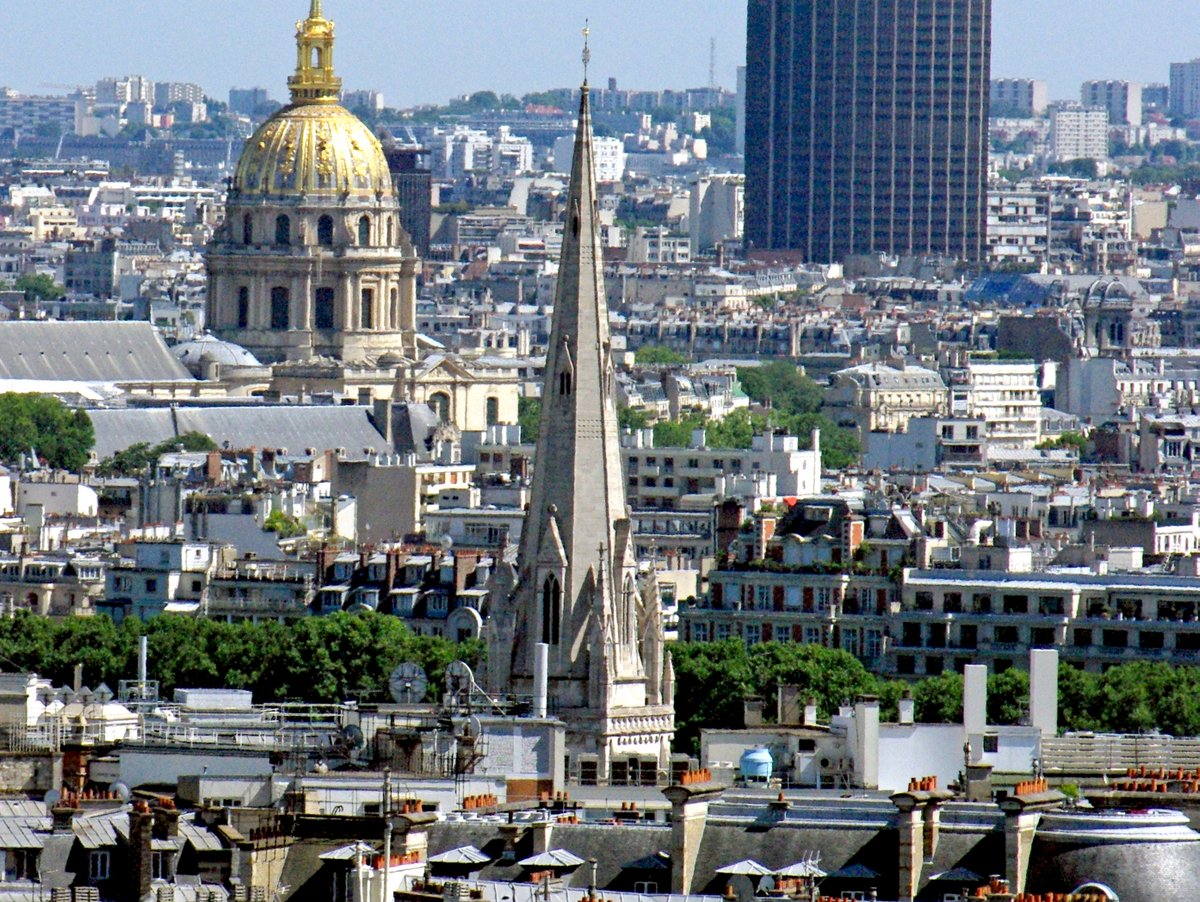
The francisation of place names in America
Many places in the United States (particularly cities and towns, rivers, mountains, and valleys) bear French names due to the historical influence of French explorers and settlers in North America.
This French toponymy is a reminder that France owned vast territories in North America from the 16th to the 19th century. More specifically, the territory of the United States includes significant parts of New France‘s regions: Acadia, Canada and Louisiana.
This map shows the territories that were at one time controlled by France (BLUE), Great Britain (RED) and Spain (ORANGE) during the period 1534-1803.
(Note: This map contains only around sixty forts, whereas New France had more than 150.)
![licence [CC BY-SA 4.0] from Wikimedia Commons](https://frenchmoments.eu/wp-content/uploads/2023/08/New-France-Map-1562-1763-©-Parigot-licence-CC-BY-SA-3.0-from-Wikimedia-Commons.jpg)
Therefore, the French played a significant role in the early exploration and colonization of parts of what is now the United States and their legacy is reflected in the region’s toponymy (naming of places). Here are five reasons why this is the case:
1. Early Exploration and Colonization
French explorers like Samuel de Champlain and Jacques Cartier were among the first to explore parts of North America in the 16th and 17th centuries. They established a presence in areas that are now Canada, the Mississippi River Valley, and the Great Lakes region. This early presence led to the naming various geographical features and settlements in French.
2. Fur Trade and Settlements
The French were heavily involved in the fur trade with Native American tribes, leading to the establishment of trading posts and settlements. These outposts often adopted French names. For example, Detroit, Michigan, initially called Fort Pontchartrain du Détroit, was named after the French colonial administrator Louis Phélypeaux, comte de Pontchartrain.
3. Louisiana Purchase
One of the most significant instances of French influence was the Louisiana Purchase of 1803, when the United States acquired a vast territory from France, including present-day Arkansas, Missouri, Iowa, Oklahoma, Kansas, Nebraska, and other states. With French origins, cities like New Orleans and St. Louis became essential centres in the newly acquired land.
4. Cultural and Linguistic Impact
French culture and language have left an indelible mark on the regions they influenced. Even after territories were transferred to other colonial powers or became part of the United States, French influence shaped local customs, traditions, and language.
5. Historical Memory
Many places were named during French colonization, and these names have endured through centuries. They serve as a reminder of the diverse historical influences that have contributed to the American cultural landscape. Examples of cities with French names include Baton Rouge (Louisiana’s capital), Lafayette (named after the Marquis de Lafayette, who supported the American Revolution), and Saint Louis (named after King Louis IX of France).
However, hundreds of place names of French origin in the Midwest region were replaced by directly translated English names when American settlers became the local majority (e.g. “La Petite Roche” became Little Rock, “Baie verte” became Green Bay, “Grandes Fourches” became Grand Forks).
On the other hand, Spanish place names in the southwest were generally not replaced by English names (Los Angeles, Santa Barbara, San Diego, San Francisco).

What are the American cities in French?
The United States’ largest cities don’t have different names in French. However, there are a few notable exceptions:
- Philadelphie (Philadelphia),
- La Nouvelle-Orléans (New Orleans),
- Détroit (Detroit)
- Saint-Louis (St. Louis)
- Pittsbourg (Pittsburgh) – only on rare occasions
- La Nouvelle-Amsterdam (formerly New Amsterdam, first name for New York City).
![Philadelphia © Mefman00 - licence [CC0] from Wikimedia Commons](https://frenchmoments.eu/wp-content/uploads/2023/08/Philadelphia-©-Mefman00-licence-CC0-from-Wikimedia-Commons-scaled.jpg)
What are the names of the American states in French?
Most states in the USA have kept their initial names in French, except for twelve.
When citing a state, you can use the following:
- Bâton-Rouge est la capitale de la Louisiane. (Baton Rouge is the capital of Louisiana.)
- Montpelier est la capitale de l’État du Vermont. (Montpelier is the capital of the state of Vermont.)
![Map of the US States in French © Jaipasdepseudo - licence [CC BY-SA 4.0] from Wikimedia Commons](https://frenchmoments.eu/wp-content/uploads/2023/08/Map-of-the-US-States-in-French-©-Jaipasdepseudo-licence-CC-BY-SA-4.0-from-Wikimedia-Commons-scaled.jpg)
Here’s the list of the 50 states of America in French:
(m = masculine, f = feminine)
- Alabama (m)
- Alaska (m)
- Arizona (m)
- Arkansas (m)
- Californie (f) – California
- Caroline du Nord (f) – North Carolina
- Caroline du Sud (f) – South Carolina
- Colorado (m)
- Connecticut (m)
- Dakota du Nord (m) – North Dakota
- Dakota du Sud (m) – South Dakota
- Delaware (m)
- Floride (f) – Florida
- Géorgie (f) – Georgia
- Hawaï (m) – Hawaii
- Idaho (m)
- Illinois (m)
- Indiana (m)
- Iowa (m)
- Kansas (m)
- Kentucky (m)
- Louisiane (f) – Louisiana
- Maine (m)
- Maryland (m)
- Massachusetts (m)
- Michigan (m)
- Minnesota (m)
- Mississippi (m)
- Missouri (m)
- Montana (m)
- Nebraska (m)
- Nevada (m)
- New Hampshire (m)
- New Jersey (m)
- New York (m)
- Nouveau-Mexique (m) – New Mexico
- Ohio (m)
- Oklahoma (m)
- Oregon (m)
- Pennsylvanie (f) – Pennsylvania
- Rhode Island (m)
- Tennessee (m)
- Texas (m)
- Utah (m)
- Vermont (m)
- Virginie (f) – Virginia
- Virginie-Occidentale (f) – West Virginia
- Washington (m)
- Wisconsin (m)
- Wyoming (m)
And also:
- District de Columbia (m) – District of Columbia
- Porto-Rico (m)
- Îles Mariannes du Nord (f) – Northern Mariana Islands
American Hydronyms and Oronyms in French
A hydronym is a name given to a body of water.
An oronym is applied to naming a mountain or hill.
Here are a few examples of names used often in French:
Seas
- l’Océan Atlantique (the Atlantic Ocean)
- l’Océan Pacifique (the Pacific Ocean)
- le golfe du Mexique (Gulf of Mexico)
- La baie de Chesapeake (Chesapeake Bay)
- La baie de San Francisco (San Francisco Bay)
Lakes of the US in French
- les Grands Lacs (Great Lakes)
- le lac Supérieur (Lake Superior)
- le lac Michigan (Lake Michigan)
- le lac Huron (Lake Huron)
- le lac Érié (Lake Erie)
- le lac Ontario (Lake Ontario)
- le lac Sainte-Claire (Lake St Clair)
- le Grand Lac Salé (Great Salt Lake)
Rivers
When used in French, all the rivers in the USA have kept their initial names (except one!). Most of them are masculine:
- La rivière Rouge (f) – Red River
- Le Mississippi (m)
- Le Missouri (m)
- Le Yukon (m)
- Le Colorado (m)
And:
- Les chutes du Niagara (f) – Niagara Falls
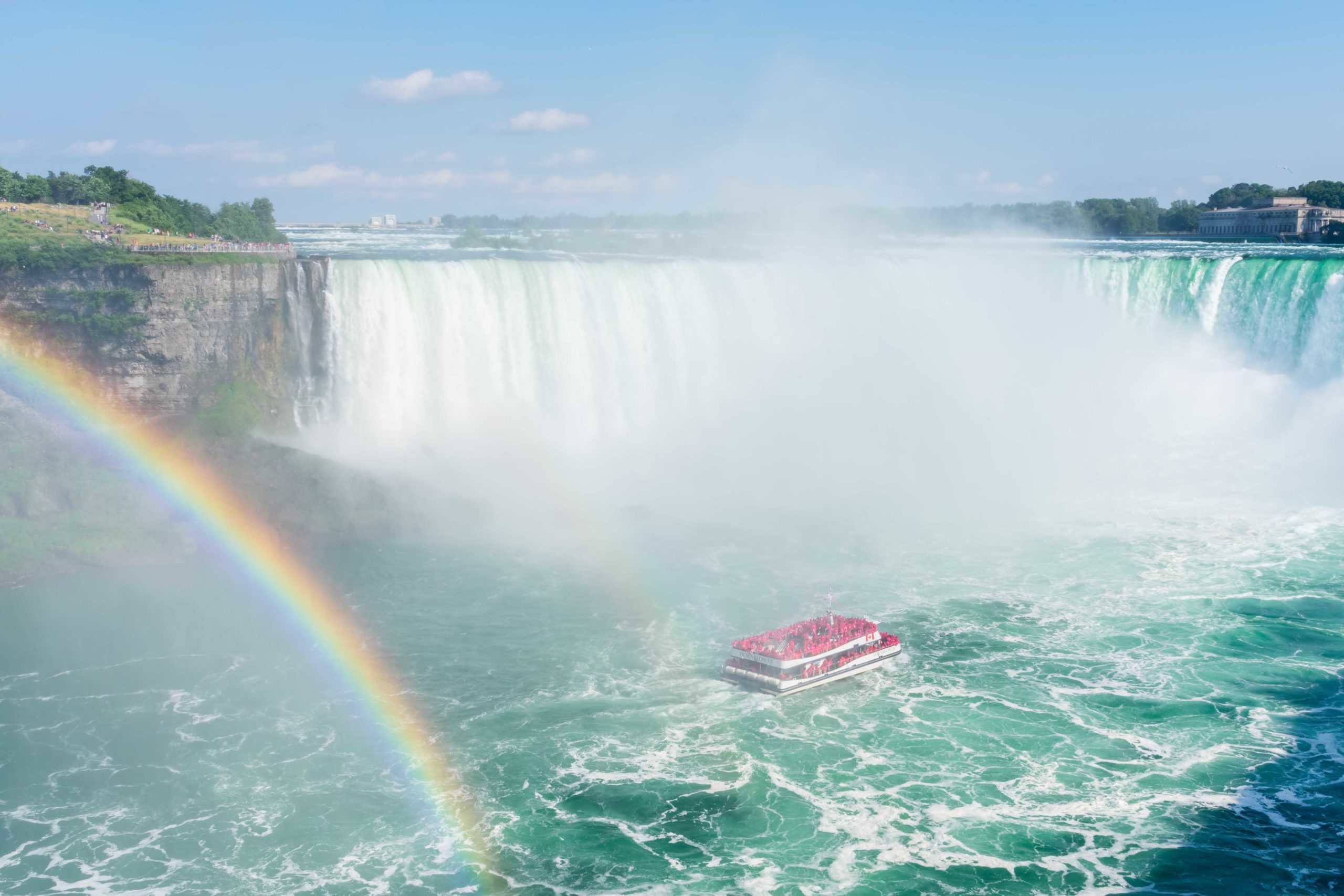
Hills and mountains
- Les montagnes Rocheuses (Rocky Mountains)
- Le mont Whitney (Mount Whitney)
- Les Appalaches
- La sierra Nevada
- La chaîne des Cascades (Cascade Range)
- Les Grandes Plaines (Great Plains)
Twin Towns between France and America
It is estimated that nearly 20,000 French people are actively participating in twinning programmes.
Out of 6,700 committees in France, nearly 1,100 include English-French twinning towns and villages, 2,300 with Germany and 1,000 with Italy.
The first official twinning between a French and an American city was signed in 1947 between Denver and Brest.
Since then, associations have set up around a hundred twinning arrangements, mainly on the American side. On the French side, cooperation agreements generally concern medium-sized towns (over 10,000 inhabitants) and large towns (over 10,000 inhabitants).
Cities and towns sharing a common feature or interest
Many French and US twinned cities and villages share a common feature or interest.
As the saying goes, qui se ressemble s’assemble (like seeks like).
It could be:
- a prestigious university (Boston and Strasbourg)
- an industrial past (Buffalo and Lille, Lowell and Saint-Dié-des-Vosges)
- a historic link due to the same toponym (New Orleans and Orléans, New Rochelle and La Rochelle, Macon with Mâcon)
- a large city with state influence (Rochester and Rennes, St. Louis and Lyon)
- a prestigious site (Beverly Hills and Cannes)
- a port city (Seattle and Nantes)
- a sea resort (Miami and Nice, Atlantic City and Cabourg, Newport Beach and Antibes)
- a mountain resort (Aspen and Chamonix-Mont-Blanc)

Examples of American and French twinning towns
- Atlanta with Toulouse
- Atlantic City with Cabourg
- Aspen with Chamonix-Mont-Blanc
- Baton Rouge with Aix-en-Provence
- Bayonne with Bayonne
- Beverly Hills with Cannes
- Boston with Strasbourg
- Buffalo with Lille
- Castroville with Eguisheim
- Charlotte with Limoges
- Charlottesville with Besançon
- Cincinnati with Nancy
- Cleveland with Rouen
- Corpus Christi with Agen
- Dallas with Dijon
- Denver with Brest
- Des Moines with Saint-Etienne
- Fairbanks with Aix-les-Bains
- Fort Worth with Nîmes
- Jacksonville with Nantes
- Kansas City with Metz
- Lake Charles with Perpignan
- Lexington with Deauville
- Los Angeles with Bordeaux
- Louisville with Montpellier
- Lowell with Saint-Dié-des-Vosges
- Macon with Mâcon
- Miami with Nice
- Nashville with Caen
- New Orleans with Orléans
- New Rochelle with La Rochelle
- Newport Beach with Antibes
- Norfolk with Toulon
- Orange with Orange
- Phoenix with Grenoble
- Raleigh with Compiègne
- Rochester with Rennes
- Seattle with Nantes
- Springfield with Tours
- St. Cloud with Saint-Cloud
- St. Louis with Lyon
- Tempe with Beaulieu-sur-Mer
- Tulsa with Amiens
- Vincennes with Vincennes
- Winchester with Saint-Germain-en-Laye
Click here for a comprehensive list of France-US twinning programmes.
French towns not twinned with the US
Curiously, some major towns in France are not twinned with a US counterpart (and vice-versa):
- Annecy
- Le Mans
- Mulhouse
- Paris (only twinned with Rome)

America in French: Learn more!
- France in French: A Little Guide!
- Germany in French: A Little Guide!
- England in French: A Little Guide!
- The fabulous story of the Statue of Liberty
- The geography of France for (English) kids!
- Learn more about the French names of America on Wikipedia
- Learn more about the French names of the United States on Wikipedia
- 3 villes du nord-est jumelées avec les Etats-Unis – a blog post in French on our blog Mon Grand-Est
- Discover our French blog about England: Destination Angleterre




